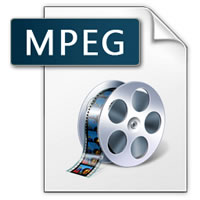Difference between AVI and MPEG
Key difference: AVI stands for Audio Video Interleave. It was included as part of the Video for Windows technology. It was developed by Windows in reprisal for the MOV file format developed by Apple computers. Most people do not realize that AVI and MOV are not encoding formats, but are wrappers for formatted video files. MPEG, on the other hand, stands for the Moving Picture Experts Group. One of the most commonly used MPEG formats is the .mpg or .mpeg. .mpg is one of a number of file extensions for MPEG-1 or MPEG-2 audio and video compression.The MPEG-1 and MPEG-2 is a standard for lossy compression of video and audio.
 AVI stands for Audio Video Interleave. It was included as part of the Video for Windows technology. It was developed by Windows in reprisal for the MOV file format developed by Apple computers. Similar to MOV, it contained both audio and video data in a file container, which allowed for synchronous audio-with-video playback. Most people do not realize that AVI and MOV are not encoding formats, but are wrappers for formatted video files.
AVI stands for Audio Video Interleave. It was included as part of the Video for Windows technology. It was developed by Windows in reprisal for the MOV file format developed by Apple computers. Similar to MOV, it contained both audio and video data in a file container, which allowed for synchronous audio-with-video playback. Most people do not realize that AVI and MOV are not encoding formats, but are wrappers for formatted video files.
A container file specifies how the data streams inside it are organized. The actual organization and representation of the data streams are done by the various types of codecs. It is the codecs that affects video quality and compression. It describes how video or audio data is to be compressed and decompressed. Hence, each AVI file will differ on the basis of which codec is used.
However, at the time, AVI did not have the sophistication of QuickTime, nor its advanced features. Later, Microsoft opened the format to OpenDML group to develop it. Eventually, Microsoft dropped the AVI format in favor of their WMV format. AVI, in turn, later became the format of choice for pirated movies, probably due to the simplicity of the program.
Generally, AVI tends to be larger than most video formats. This is mainly due to minimal compression features available. Also, depending on the codecs, an AVI file may support multiple video or audio streams. Currently, AVI is the most popular and commonly used file format. It is supported by many video players, as well as some mobile devices.
MPEG, on the other hand, stands for the Moving Picture Experts Group. It is a working group of experts that was formed in 1988 by ISO and IEC. It was a joint initiative between Hiroshi Yasuda of the Nippon Telegraph and Telephone and Leonardo Chiariglione. Chiariglione has served as the group’s Chair since the group’s inception.
 The aim of MPEG was to set standards for audio and video compression and transmission. By 2005, the group has grown to include approximately 350 members per meeting from various industries, universities, and research institutions.
The aim of MPEG was to set standards for audio and video compression and transmission. By 2005, the group has grown to include approximately 350 members per meeting from various industries, universities, and research institutions.
The standards as set by MPEG consist of different parts. Each part covers a certain aspect of the whole specification. MPEG has standardized the following compression formats and ancillary standards:
- MPEG-1 (1993): Coding of moving pictures and associated audio for digital storage media at up to about 1.5 Mbit/s (ISO/IEC 11172). It includes the popular MPEG-1 Audio Layer III (MP3) audio compression format.
- MPEG-2 (1995): Generic coding of moving pictures and associated audio information (ISO/IEC 13818).
- MPEG-3: MPEG-3 dealt with standardizing scalable and multi-resolution compression and was intended for HDTV compression but was found to be redundant and was merged with MPEG-2.
- MPEG-4 (1998): Coding of audio-visual objects. It includes the MPEG-4 Part 14 (MP4).
One of the most commonly used MPEG formats is the .mpg or .mpeg. .mpg is one of a number of file extensions for MPEG-1 or MPEG-2 audio and video compression. The MPEG-1 and MPEG-2 is a standard for lossy compression of video and audio. A lossy compression means that while saving file, there is a slight loss of quality due to compression. With each re-save there a slight loss of quality due to compression. Hence, it is not the greatest format in case one needs to keep making numerous edits and re-saves to the image. Still, if one only makes a few edits and the file is saved in a high quality format, the slight loss of quality due to compression is mainly negligible. An advantage to using this format is that due to compression, the file will take up less space for data storage.
The MPEG-1 standard consists of the following parts:
- Systems (storage and synchronization of video, audio, and other data together)
- Video (compressed video content)
- Audio (compressed audio content)
- Conformance testing (testing the correctness of implementations of the standard)
- Reference software (example software showing how to encode and decode according to the standard)
Image Courtesy: whatthetech.com, findicons.com









Add new comment